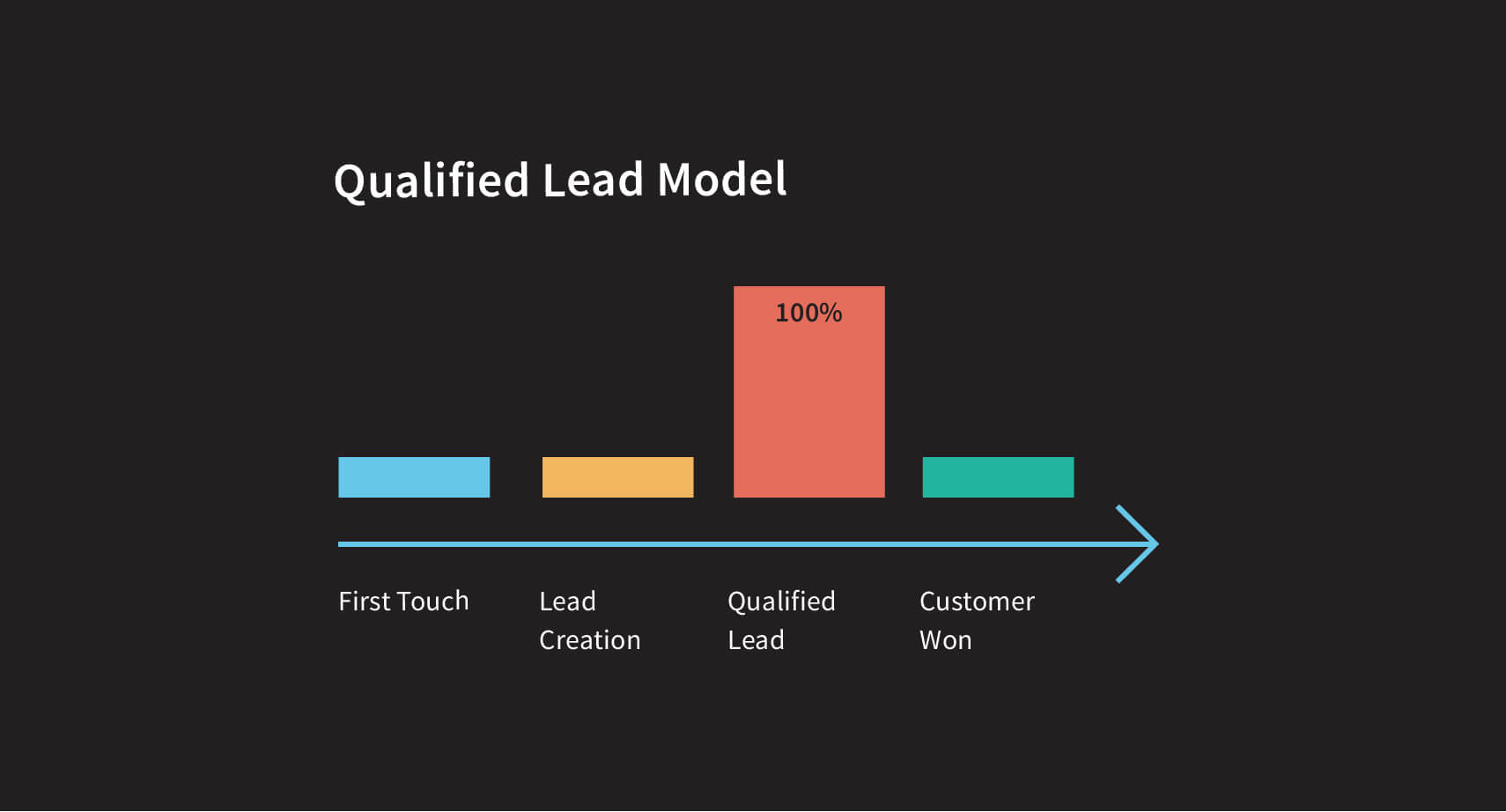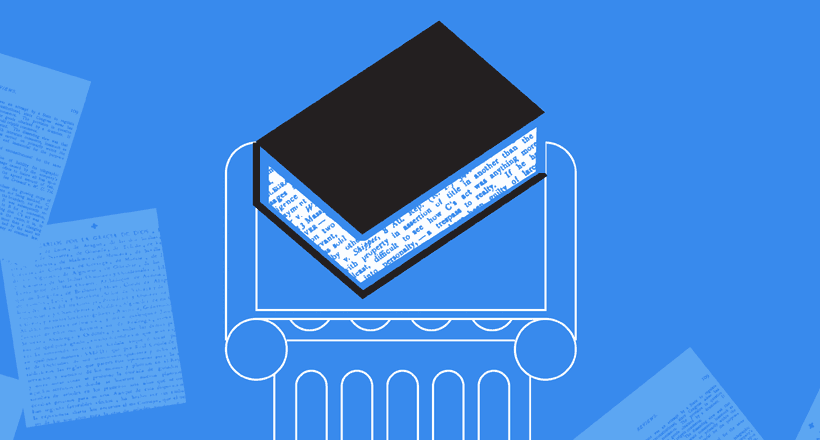Qualified lead model, more commonly known as last-touch attribution, is an easy-to-understand, single-touch model. With the lead qualified model, 100% of the credit for a sale is given to the last-touch milestone before a lead converts and becomes a customer.

Let’s explore qualified lead models in more depth: what they’re good at, where they’re slightly lacking, and when best to use them. We’ll also compare them to other similar attribution models so you can see if they’re right for your organization.
- Pros of using qualified lead model
- Cons of the qualified lead model
- Who should & shouldn’t use qualified lead attribution model
- How to set up a qualified lead/last-touch attribution model

Pros of using a qualified lead model
- Easy to understand
- Easy to set up
- Great for short buying cycles/customer journeys
It’s easy for marketers to fall into the trap of overcomplicating things. With so many channels, so much data, and so many concurrent strategies to deal with at any one time, simplicity can sometimes be overlooked. That doesn’t have to be the case. When you’re looking into which particular marketing strategy was most effective, this attribution model gives you a simple, definitive answer: the last-touch milestone.
There’s no divvying up the credit according to one equation or another, no fine-tuning needed, and no real need to mark out all the different milestones. As long as you can identify the last-touch milestone (the point right before they converted), you’re good to go.
This means more time to focus on other things, rather than trying to unpack what your complex attribution model is telling you. It also means less stress. Customizable multi-touch attribution models might be the most accurate representation of your customers’ journeys, but if you don’t have in-house data scientists who can fine-tune them for you, it might be a hassle to make sense of the data.
Cons of a qualified lead model
- Overly simplistic
- Not useful for organizations with a long buying cycle
The qualified lead model’s simplicity is also its downfall. As mentioned, it’s great for small organizations looking for top-level insights–but this doesn’t mean that it’s right for every organization out there. The average customer journey is becoming increasingly long and fragmented, especially in B2B circles. Consumers cross over several different platforms over a number of weeks as they go from the initial brand-awareness stage all the way through to becoming customers.
As a marketer, it’s important that you recognize all these different interactions as your marketing strategies should work in tandem to lead a prospect down the funnel–rather than acting as standalone efforts.
Analyzing the interaction between various strategies is critical for companies with long buying cycles; they need to make sure that their efforts are all contributing something valuable to the end goal of leading the consumer down the funnel. In these cases, lead qualified models simply wouldn’t work. Attributing 100% of the credit to the last-touch milestone alone gives a skewed perception of your marketing strategy and may mean you’re neglecting other critical milestones.
Brand awareness is crucial to attracting new customers. Retargeting is a lifesaver when you need to re-attract lapsed prospects. Working out when a prospect becomes a qualified lead is a key step in deciding how best to market to them.
However, a llead qualified model would ignore all these touchpoints entirely, meaning you’d only continue to invest heavily in the last-touch milestone (at the expense of all other milestones).
Who should and shouldn't use qualified lead models?
Use it: Small businesses and organizations
If you’re a fairly small organization with short buying cycles (your customers usually go through 1–3 touchpoints before converting), then a last-touch model will be just fine. It will give you quick results that are easy to understand–leaving you to then adjust your marketing strategy accordingly.
There’s no point in spending time, money, and effort on making a complex attribution model work for your company: your resources are probably better spent elsewhere. Of course, as you grow, you might want to consider changing your attribution model (especially if your marketing strategy starts to stall in its effectiveness).
Avoid it: Larger businesses & complex customer journeys
If you work for a large organization with long and complex buying cycles, in-house data scientists who are on hand to help you out, and a large marketing budget, then a lead qualified model won’t be the most effective for giving credit where credit is due. For complicated consumer journeys, you’ll need a more complex attribution model that takes into account multiple channels and touches.
In order to appropriately guide your marketing investment going forward, you need to make sure you know precisely which touchpoints work and which don’t, as well as how they all interact with each other. And you won’t find this level of detail with a last-touch attribution model.
How to set up qualified lead attribution
Qualified lead or last-touch attribution is easy to set up. Most attribution platforms, including Google Analytics, will default credit to the last touch. If you’re using Google Analytics then it’s one of the off-the-shelf options available to use at the click of a button. And even if you’re using another attribution provider, it should still be a fairly easy process to get set up.
Last-touch models are so common and uncomplicated that it’s usually an off-the-shelf option–there’s no complicated math involved, you just need to give 100% of the credit to the last-touch milestone.



















